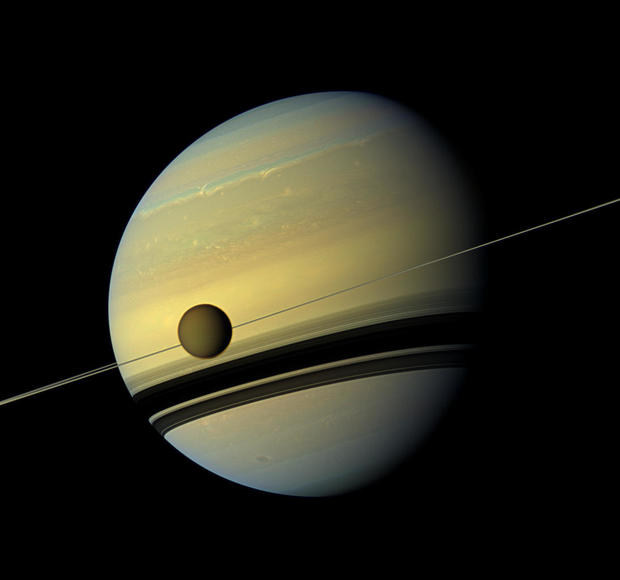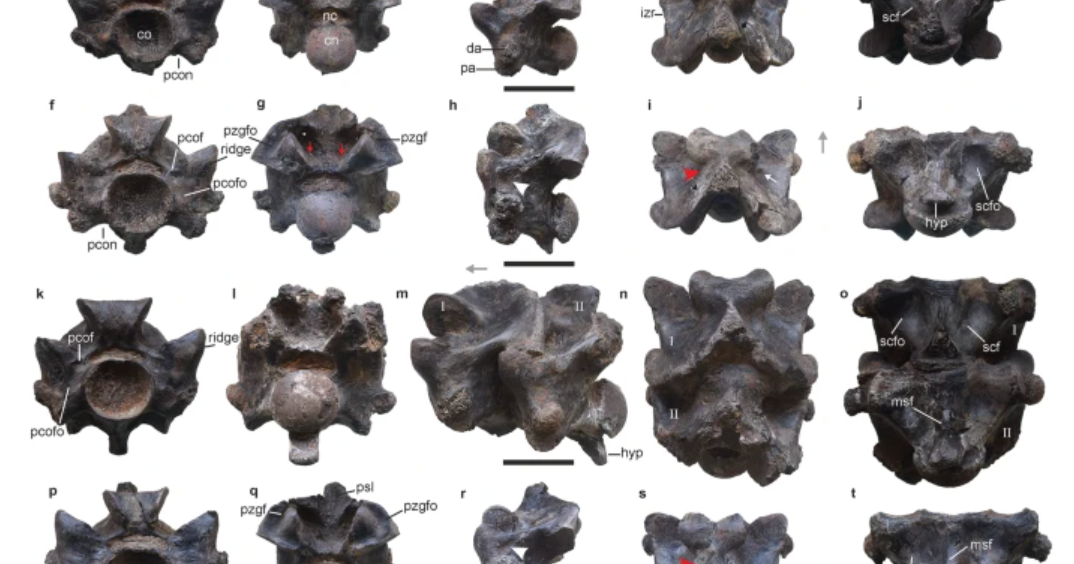Saturn's largest moon is drifting off into space 100 times faster than researchers previously thought
Titan, Saturn's largest moon, is distancing itself from its planet at a rapid speed, astronomers announced this week. The moon is drifting away into space much faster than previously predicted, the scientists said, possibly altering their understanding of our solar system.
Titan, which scientists believe could support life, is moving about 100 times faster than researchers previously thought, according to a study published this week in the journal Nature Astronomy. Using data from NASA's Cassini spacecraft, which observed Saturn for more than 13 years, astronomers found Titan is migrating at a rate of about four inches per year.
It's not unusual for moons to slowly drift from their host planets — in fact, our own moon is constantly floating away from Earth at a rate of 1.5 inches per year. However, due to Titan's distance from Saturn, scientists thought it was moving away from the planet more slowly.
According to NASA, as a moon orbits, its gravity creates a temporary bulge in the planet, causing tides as oceans move from side to side. Over time, the energy created by this interaction transfers from the planet to its moon, pushing it further away.
But don't worry about our moon. "Earth will not 'lose' the moon until both the earth and moon are engulfed by the sun in roughly six billion years," according to researchers at Caltech.
While scientists know that Saturn formed 4.6 billion years ago, the details on the formations of its rings and its system of more than 80 moons are less certain. Knowing that Titan is currently 759,000 miles from the planet, this new discovery suggests the whole system expanded relatively quickly.
"This result brings an important new piece of the puzzle for the highly debated question of the age of the Saturn system and how its moons formed," lead author Valery Lainey said in a news release.
"Most prior work had predicted that moons like Titan or Jupiter's moon Callisto were formed at an orbital distance similar to where we see them now," said co-author Jim Fuller. "This implies that the Saturnian moon system, and potentially its rings, have formed and evolved more dynamically than previously believed."
For nearly 50 years, scientists estimated how fast a moon drifts from its planet under the assumption that outer moons migrate more slowly than closer moons because they are further away from the host planet's gravity. Four years ago, Fuller countered those theories, publishing research suggesting that a new orbit pattern would allow outer moons to migrate at a similar rate to inner moons.
To reach their new findings on Titan, researchers mapped background stars in images captured by Cassini in order to track the moon over a period of 10 years. They then compared their findings to an independent radio science dataset measuring Cassini's velocity as it was affected by the moon.
"By using two completely different datasets, we obtained results that are in full agreement, and also in agreement with Jim Fuller's theory, which predicted a much faster migration of Titan," said co-author Paolo Tortora.
With a diameter of 5,149 km, Titan is the second-largest moon in the entire solar system, larger even than the planet Mercury. It's the only moon with a dense atmosphere, and it's covered in rivers and seas made of liquid methane and ethane.
Under those bodies of liquid is a thick layer of ice. Data from Cassini revealed that a liquid water ocean lies even deeper, meaning Titan could potentially sustain life.
In 2026, NASA plans to further study the moon with its Dragonfly mission, which will arrive at Titan by 2034. The drone will monitor the moon for nearly three years to figure out if it could one day be habitable.






